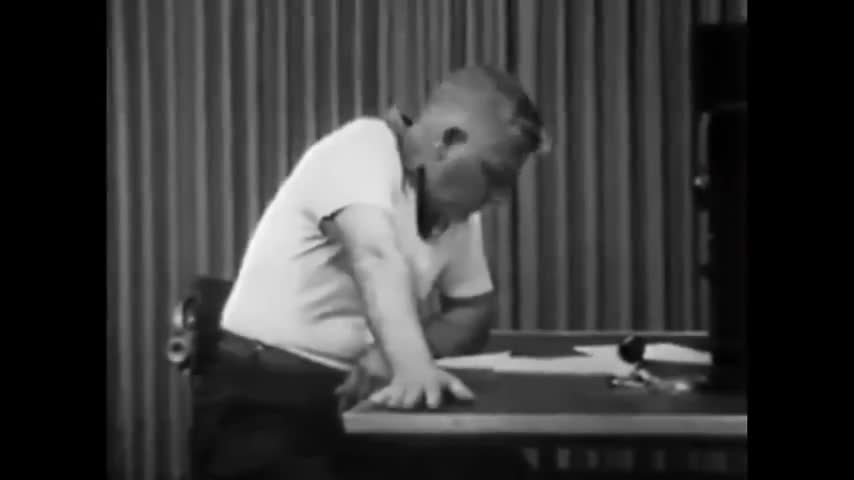Premium Only Content

Obedience - The Milgram Experiment
Milgram experiment
From Wikipedia, the free encyclopedia
For Milgram's other well-known experiment, see Small-world experiment.
"Obedience to Authority" redirects here. For the book, see Obedience to Authority: An Experimental View.
The experimenter (E) orders the teacher (T), the subject of the experiment, to give what the teacher (T) believes are painful electric shocks to a learner (L), who is actually an actor and confederate. The subject is led to believe that for each wrong answer, the learner was receiving actual electric shocks, though in reality there were no such punishments. Being separated from the subject, the confederate set up a tape recorder integrated with the electro-shock generator, which played pre-recorded sounds for each shock level.[1]
The Milgram experiment(s) on obedience to authority figures was a series of social psychology experiments conducted by Yale University psychologist Stanley Milgram. They measured the willingness of study participants, men 20–50 years old from a diverse range of occupations with varying levels of education, to obey an authority figure who instructed them to perform acts conflicting with their personal conscience. Participants were led to believe that they were assisting an unrelated experiment, in which they had to administer electric shocks to a "learner". These fake electric shocks gradually increased to levels that would have been fatal had they been real.[2]
The experiment found, unexpectedly, that a very high proportion of subjects would fully obey the instructions, albeit reluctantly. Milgram first described his research in a 1963 article in the Journal of Abnormal and Social Psychology[1] and later discussed his findings in greater depth in his 1974 book, Obedience to Authority: An Experimental View.[3]
The experiments began in July 1961, in the basement of Linsly-Chittenden Hall at Yale University,[4] three months after the start of the trial of German Nazi war criminal Adolf Eichmann in Jerusalem. Milgram devised his psychological study to explain the psychology of genocide and answer the popular contemporary question: "Could it be that Eichmann and his million accomplices in the Holocaust were just following orders? Could we call them all accomplices?"[5] The experiment was repeated many times around the globe, with fairly consistent results.
-
 16:21
16:21
The World We Live In
1 month agoWhat the Media Won't Tell You About Charlie Kirk (RE-POST)
441 -
 LIVE
LIVE
Crypto Power Hour
9 hours agoCrypto Price Swings Explained — What Every Investor Needs to Know
4,727 watching -
 21:31
21:31
Clownfish TV
19 hours agoOG YouTube is Officially ENDING! Employees Offered BUYOUTS?! | Clownfish TV
9579 -
 5:54
5:54
Gun Owners Of America
16 hours agoThe Virginia Election Could Shift The Balance of Power Nationwide
3912 -
 LIVE
LIVE
BEK TV
22 hours agoTrent Loos in the Morning - 10/31/2025
189 watching -
 LIVE
LIVE
The Bubba Army
21 hours agoIs Killing The New Trend??! - Bubba the Love Sponge® Show | 10/31/25
2,977 watching -
 2:25:16
2:25:16
Demons Row
12 hours ago $1.47 earnedEx Hells Angels MC President: Charles “Peewee”Goldsmith (Full Interview)
5.07K3 -
 3:35
3:35
Gamazda
10 hours ago $2.22 earnedThe Darkest Piano Theme?
6.83K16 -
 13:42
13:42
Nate The Lawyer
18 hours ago $2.36 earnedINSANE Judge REMOVED For Lying Under Oath, Insurance Fraud & Stolen Valor
6.53K14 -
 38:32
38:32
Code Blue Cam
1 day agoHow Police Stopped a Potential Church Massacre...
35.1K12